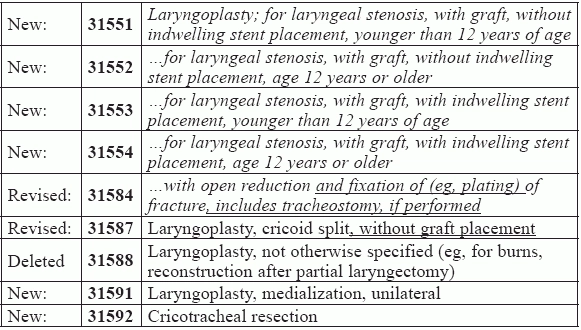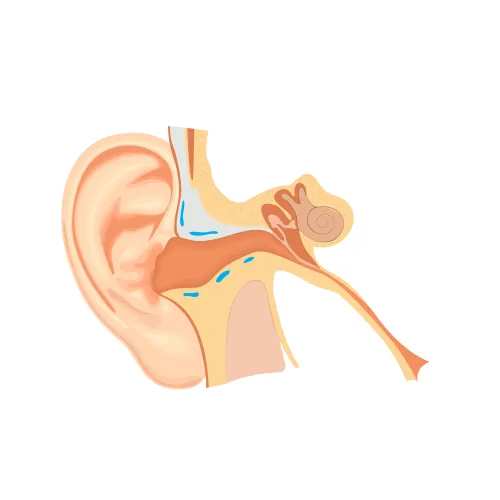Latest CPT® Edition Offers New Code for Injection Laryngoplasty

Changes could impact your reimbursement.
The New Year is just around the corner, and what better way to prepare for 2017 than to learn the new codes that will impact your ENT practice?
Caution: These updates are based on the preliminary list of code adjustments, and changes may occur before the code set is final. Keep checking back in to Otolaryngology Coding Alert for news about the final codes and details on proper use of your updated options.
Finally—A Way to Code Injection Laryngoplasty
Otolaryngologists have been performing a procedure known as injection laryngoplasty with increasing frequency, says Barbara J. Cobuzzi, MBA, CPC, CENTC, COC, CPC-P, CPC-I, CPCO, vice president at Stark Coding & Consulting, LLC, in Shrewsbury, N.J.
“They inject material into the larynx to move the vocal cords over to center in patients with vocal cord paralysis and stenosis,” Cobuzzi says. “They do it with the patient awake, either in the office or in the operating room.” In some cases, the doctor will use Electromyography (EMG) for additional guidance.
CPT® 2017 will include a new code for the procedure, which falls within the newly-expanded laryngoplasty section of CPT®, which includes recently-debuted codes, as follows:
You’ll report 31574 for injection laryngoplasty effective Jan. 1. Previously, you reported 31570 (Laryngoscopy, direct, with injection into vocal cord[s], therapeutic), 31571 (Laryngoscopy, direct, with injection into vocal cord[s], therapeutic; with operating microscope or telescope), or 31599 (Unlisted procedure, larynx) and then appealed on denial—fortunately, those problems should be eliminated thanks to CPT®’s debut of the new code, Cobuzzi says.
It’s unclear whether new code 31573 will replaced 64617 (Chemodenervation of muscle(s); larynx, unilateral, percutaneous [eg, for spasmodic dysphonia], includes guidance by needle electromyography, when performed) if the doctor uses a scope when administering chemodenervation such as botox. Currently, percutaneous botox administration is coded with 64617, whereas endoscopically transoral injected botox is coded with 31570 and 31571.
New code 31572 will likely allow coders to report laser destruction of lesions more accurately. Currently, ENT practices use 31540 (Laryngoscopy, direct, operative, with excision of tumor and/or stripping of vocal cords or epiglottis) or 31541 (Laryngoscopy, direct, operative, with excision of tumor and/or stripping of vocal cords or epiglottis; with operating microscope or telescope) for these services, Cobuzzi says.
Look for New Codes Covering Open Laryngoplasty
You’ll also find a significant number of new codes describing open laryngoplasty, which should help you get more specific in 2017. In addition, some codes were revised, which are marked with new text underlined. The new, deleted, and revised codes in this category are as follows:
It’s unclear what type of relative value units CMS will assign to these new and revised codes, but keep your eye on future issues of Otolaryngology Coding Alert as the news develops.





